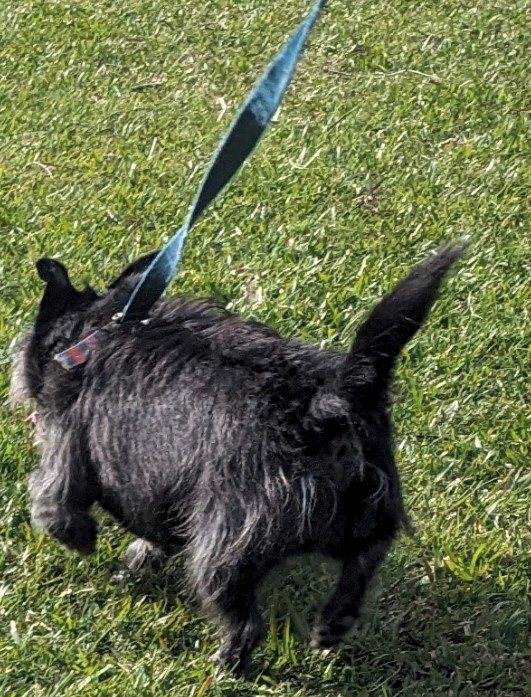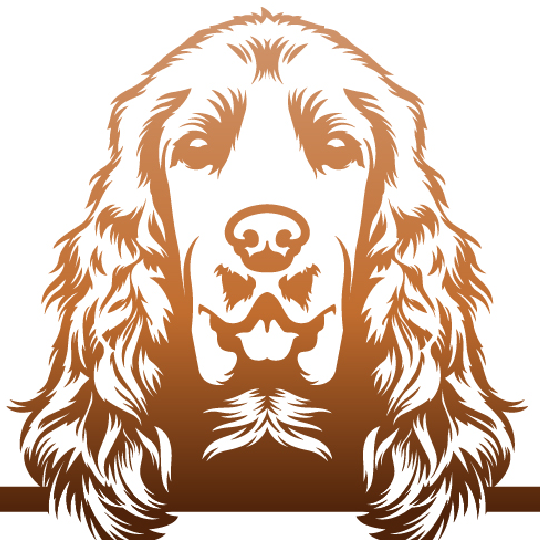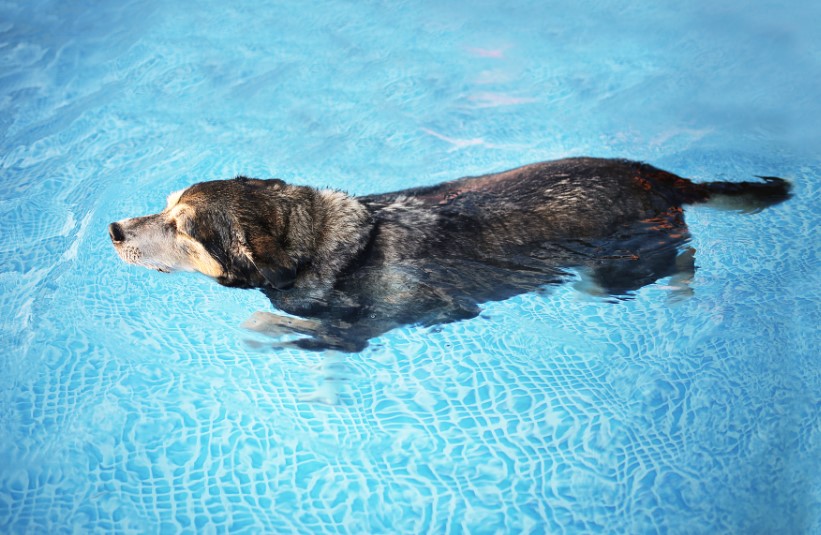Hello there, I’m Mel, a passionate professional dog walker based in the beautiful Gold Coast. I want to take you on a journey, one that’s not only close to my heart but also incredibly important for the well-being of our furry companions. This story centres around a particular dog under my care, a special canine who has faced the challenge of an ACL injury.

Walking dog with ACL injury isn’t your typical stroll in the park. It’s a unique and, at times, demanding experience that requires a deep understanding of our four-legged friends and their specific needs. In this article, I’ll share my insights and experiences on how to walk a dog with an ACL injury with the utmost care and compassion.
Let’s embark on this journey together and discover the essential aspects of providing extra care to dogs like the one I walk locally on the Gold Coast. We’ll talk about the specific needs of this dog, the environment we navigate, the importance of short walks, patience, and the invaluable guidance of our trusted veterinarians.
So, fasten your leash, and let’s get started on this enlightening adventure in canine companionship.
Meet the Pup: Our Special Companion
Allow me to introduce you to the star of our story, the furry friend who has taught me so much about compassion and canine care.
Our special companion is a delightful Cocker Spaniel who has graced me with her presence for 3 months.
Now, let’s address the elephant in the room – the ACL (Anterior Cruciate Ligament) injury. This injury has affected our dear pup’s mobility, and it’s crucial to understand its implications. The ACL is a vital ligament in a dog’s knee, responsible for providing stability during movement. When it’s injured, it can result in pain, lameness, and a significant impact on a dog’s daily life.
Our furry friend’s ACL injury has made walking a different experience altogether. It means that we must tread carefully, adapt our routine, and offer the support and understanding they need.
But beyond the injury, our special companion possesses a spirit that’s as vibrant as ever. They still enjoy life’s simple pleasures, and it’s our responsibility to ensure they can do so safely.
The Dog’s Home Environment
Before we delve into the specifics of our walks, it’s essential to understand the environment our furry friend calls home. It plays a significant role in shaping our approach to their daily exercise routine.
The dog I walk is fortunate to live near Surfers Paradise, a location that many dogs dream of frolicking on. However, due to their ACL injury, we’ve made a conscious decision to avoid the soft sand. Mostly due to challenges that sand and uneven surfaces present.
The beach, with its soft sand and irregular contours, can be tricky terrain for dogs with ACL injuries. It offers less stability, making it easier for our furry friend to lose balance and potentially exacerbate their injury.
Instead, we’ve opted for routes that are kinder on their joints and ligaments. Local parks with well-maintained pathways, quiet streets (where possible in Surfers), and open grassy areas are our preferred choices. These environments offer a level surface that reduces the risk of slips and falls, ensuring our dog’s safety during our walks.
By carefully selecting our walking routes, we create a more comfortable and secure experience for our beloved companion. In the next sections, I’ll share how these choices, combined with our commitment to regular short walks, contribute to their overall quality of life.
Short Walks, Big Impact
When it comes to walking a dog with an torn anterior cruciate ligament injury, the key phrase to remember is “short but sweet.” Our furry friend, despite their injury, still needs daily exercise and mental stimulation. However, it’s crucial to strike the right balance between keeping them active and not overexerting them.
Regular, short walks have proven to be a game-changer for our special companion. These walks serve multiple purposes, all of which contribute to their overall well-being.
Firstly, shorter walks help manage the stress on our dog’s injured knee. By keeping the duration of our outings limited, we reduce the risk of fatigue and discomfort. This approach ensures that our pup can enjoy their walks without experiencing undue dog’s pain.
Secondly, shorter walks are an excellent way to maintain a healthy weight. Excess weight can put additional strain on the injured knee, so we monitor our dog’s diet and use these walks as an opportunity for gentle exercise.
Thirdly, and perhaps most importantly, these walks provide mental stimulation. Just like humans, dogs need mental exercise to keep their minds sharp. We vary our routes and incorporate engaging activities to keep our furry friend’s mind active and curious.
A typical week might involve two or three short walks, each lasting around 20 to 30 minutes. These outings not only allow our pups to get some fresh air but also break up their week into manageable segments. It’s a win-win situation – our dog stays happy, healthy, and engaged, while we ensure their safety and comfort.
Patience is Key
Walking a dog with an ACL injury demands a significant dose of patience. It’s an essential virtue that we must cultivate as responsible dog walkers. Here’s why patience is absolutely crucial in this context:
- Understanding Limitations: Our furry friends may have physical limitations due to their ACL injury. This means that they might not be able to walk as far or as fast as they once did. Patience allows us to accept and adapt to these limitations without pushing our canine companion beyond their comfort zone.
- Recognizing Signs of Discomfort: Dogs are incredibly stoic creatures, and they may not always show signs of pain or discomfort. Patience involves attentively observing your dog during walks. Look for subtle cues like limping, favoring one leg, or any signs of distress. If you notice any discomfort, be prepared to stop the walk immediately and provide the necessary care.
- Allowing Rest Breaks: Short walks, while beneficial, can still be physically demanding for a dog with an ACL injury. Patience means being ready to offer rest breaks whenever needed. Let your dog take a breather, sit down, or even lie down if required. These breaks are vital for their comfort and overall well-being.
- Adapting to Their Pace: Dogs like routine, and they often set the pace during walks. For a dog with an cranial cruciate ligament injury, this pace might be slower than what you’re used to. Patience involves walking at their pace, letting them explore at their own speed, and not rushing them.
- Embracing the Journey: Finally, patience allows us to appreciate the journey rather than the destination. It’s about enjoying the time spent together and the sights, sounds, and smells that make each dog walk unique. Even though our walks may be shorter and slower, they’re no less meaningful or enjoyable.
Listening to the Vet’s Wisdom
One of the cornerstones of walking a dog with an ACL injury is heeding the invaluable advice of the customers trusted veterinarian. Their wisdom and guidance are essential in ensuring our furry friend’s well-being and a successful recovery.
By partnering with the vet, we’ve established a comprehensive approach to caring for our dog’s ACL injury. Their expertise is the compass that guides us through this challenging journey, ensuring that we provide the best possible care.
Dog Walking Gold Coast: Adaptations and Equipment
Walking a dog with an torn ACL injury requires a few special adaptations and equipment to ensure their safety and comfort. Here are some of the tools and strategies we employ during our walks:
- Supportive Harness: A supportive harness is a game-changer. It provides additional stability and helps distribute weight evenly, reducing strain on the injured leg. Our vet recommended a specific type of harness, which we use for every walk.
- Leash with Handles: A leash with multiple handles is incredibly useful. It allows us to adjust the length easily and provides a secure grip during sudden stops or emergencies. This added control is vital when walking a dog with an ACL injury.
- Non-Slip Booties: Sometimes, we use non-slip booties on our dog’s paws to enhance traction on slippery surfaces. These booties offer an extra layer of protection, especially during wet or icy conditions.
- Stroller or Cart: For days when our furry friend needs a break or can’t walk at all, we have a stroller or cart on standby. This allows them to join us on our outings without putting weight on the injured leg.
- Gentle Leads: Gentle lead collars or head halters are great for dogs with ACL injuries. They provide control without putting pressure on the neck, which can be important for dogs with mobility issues.
- Ramps and Steps: At home, we’ve installed ramps and steps to make it easier for our dog to access different areas, like the car or the sofa. These adaptations minimize the risk of further injury.
- Pool or Water: This can be a great choice depending on the injury and seek advice from your vet before jumping any water.
Conclusion – Walking a dog with an ACL Injury
I hope you’ve gained valuable insights into the care and compassion required for our canine companions.
Walking with dogs who faces the daily challenge of an ACL injury, has taught me the importance of understanding, patience, and adaptation. But beyond the specific experience, the lessons learned can benefit dog walkers around the Gold Coast and beyond.
Remember, every dog is unique, with individual needs and limitations. Tailoring your approach to accommodate these differences is key to ensuring a positive walking experience for all. Safety, mental stimulation, and respecting a dog’s limits are principles that should guide every dog walker.
I want to extend my gratitude to the trusted veterinarian, whose wisdom has been an essential compass on this journey, and to the supportive community of dog lovers in Gold Coast.
If you’re a fellow dog walker on the Gold Coast or anywhere else, and you find yourself walking a dog with an ACL injury, know that you’re not alone. With the right approach, patience, and the well-being of our furry friends as our top priority, we can provide them with the love and care they deserve.
Thank you for joining me on this adventure, and here’s to many more happy, safe, and fulfilling walks with our beloved dogs.
Please remember to seek your own veterinarian advice as every dog is different and requires a specific treatment plan.





Hello, I live in the UK in Wales near Swansea, I have a 7 yrs old Cockapoo Maggie Mae and her beloved companion is a 10 yrs old Cavapoo Annie Mae who is my daughters dog. At this moment in time the two dogs live at my home where now being retired I am able to give them 100% love and attention, I am their “Father” and love them unconditionally. 3 months ago the Cavapoo Annie had an operation to “Band” repair to her back R/H leg, she was insured with Pet Plan for £4,000 which was the total cost for the hopefully successfull procedure. The vet pointed out because of her age she may have the same issue with th L/H rear and sadly on the 10th June 2025 that has happened after only 3 months. Pet Plan have informed us that although it is a different leg ACL is classed as a “degenerated” illness it is classed as One insurance claim so the 1st operation means our claim has no cover ie money to pay for the 2nd procedure , I know this story is “long winded” We think this is grossly unfair for “us people” who love our little companions who were not made aware of this situation “Upfront” It would have made a £10,000 cover even more costly but the cover would have been there for little Annie Mae, our story needs insurance companies to emphasize this to their pet loving customers. But more importantly where does that leave our little Annie Mae who is now in need of treatment to rectify her pain, ANY IDEAS.